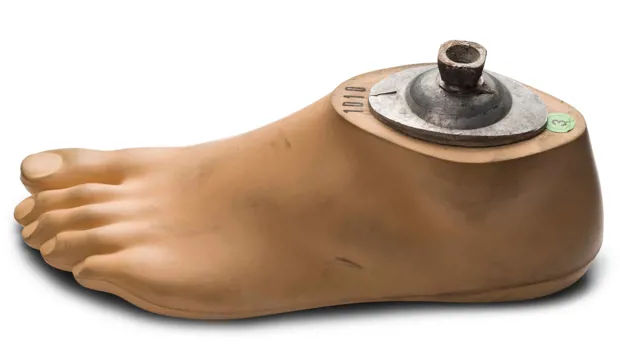
Materials for a robotic arm
Investigate the properties of smart springs and see how they might be used as muscles in a robotic arm
This fun engineering activity encourages students to investigate prosthetic materials and the properties of smart springs and see how they could be used as muscles in a robotic arm. Different springs will perform in a variety of different ways, and it is through investigation that students will be able to work out which would be best for a robotic arm.
This is a free resource aimed at secondary school students. This activity encourages students to investigate the properties of smart materials and carry out some data manipulation. Students will also explore the possible moral and ethical issues associated with people potentially choosing to replace healthy body parts with artificial prostheses because they offer higher performance.
Activity instructions
In this practical STEM activity students will investigate the properties of smart springs and see how they might be used as muscles in a robotic arm.
Students will be arranged into teams of three or four and the teacher will explain the properties of smart springs and shape memory alloys.
Their task will be first of all to suspend the spring from a retort stand and examine how it works. A circuit diagram can be found below. Students should examine the spring and conclude that contraction of the spring is caused by the heating effect of the current passing through the spring.
The springs should be capable of lifting between 0.5 and 1 kilogram. It is important that the maximum mass they can lift is known prior to the lesson so that students can be told not to exceed it. Trying to lift masses which are too heavy can damage the springs.
If time allows, students can present their findings back to the class, or they could simply be written up as a report discussing the suitability of such materials for use in robotic arms.
This exercise should take around an hour to complete.
What you will need
- Several desk fans should be available but kept out of sight of the students until needed.
- 1 to 1.5 mm diameter copper or other fairly flexible metal wire. Must be stripped of insulation
- A smart spring made from a shape memory alloy such as nitinol
- Power supply, leads, crocodile clips
- Retort stand
- Ammeter
- Voltmeter
- Sets of slot masses of various sizes
Robot arm and circuit diagram

The engineering context
The development of new materials with incredible properties is changing the way we live. From LCD TVs to super light airliners, these materials have quickly found their way into the modern technology around us. One area where modern materials have made a huge impact is in the development of prosthetic devices. Some of these devices are beginning to outperform ‘natural’ body parts.
Suggested learning outcomes
By the end of this activity learners will be able to explain why a material is chosen for a use based on its properties, they will be able to describe how smart materials are used in a real life context and they will be able to use and manipulate material-related data.
Download the free activity sheet below!
All activity sheets and supporting resources are free to download, and all the documents are fully editable, so you can tailor them to your students’ and your schools’ needs.
The activity sheet includes teacher notes, guidance, useful web links, and links (where appropriate) to the national curriculum in each of the four devolved UK nations; England, Northern Ireland, Scotland and Wales.
Please share your classroom learning highlights with us @IETeducation
Available Downloads

Activity overview
Description, teachers' notes and curriculum links.

Handout
Experiment exploring the properties of smart springs made from shape memory alloys.

Handout
Experiment Sheet 2: how a smart spring might be used as an artificial muscle in a robotic arm.

Quiz
Using prosthetic engineering and smart materials to build a knee


